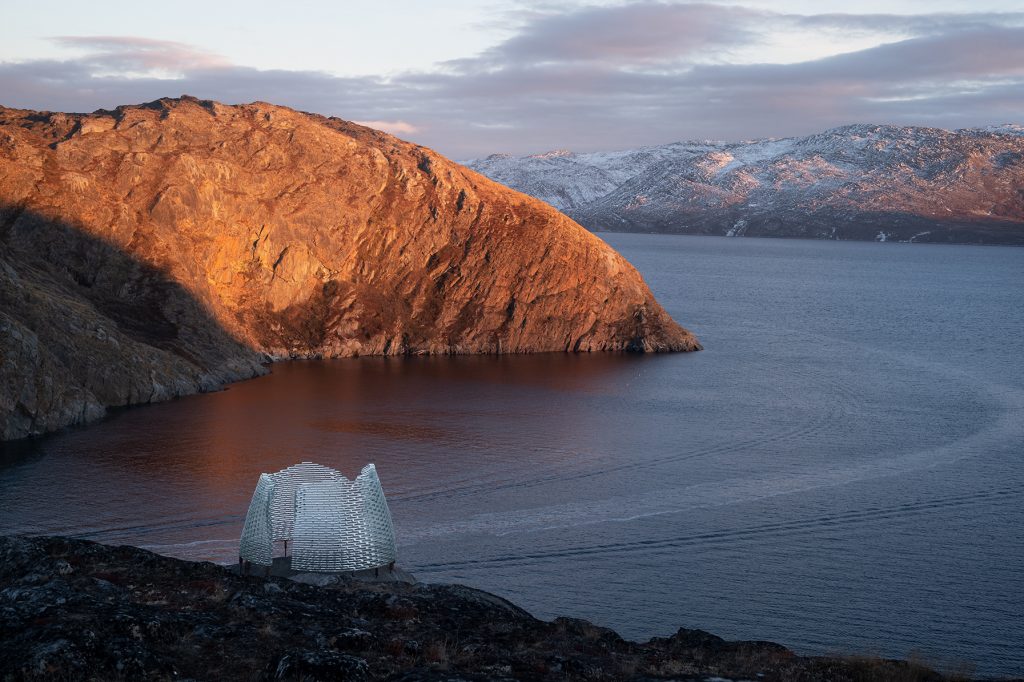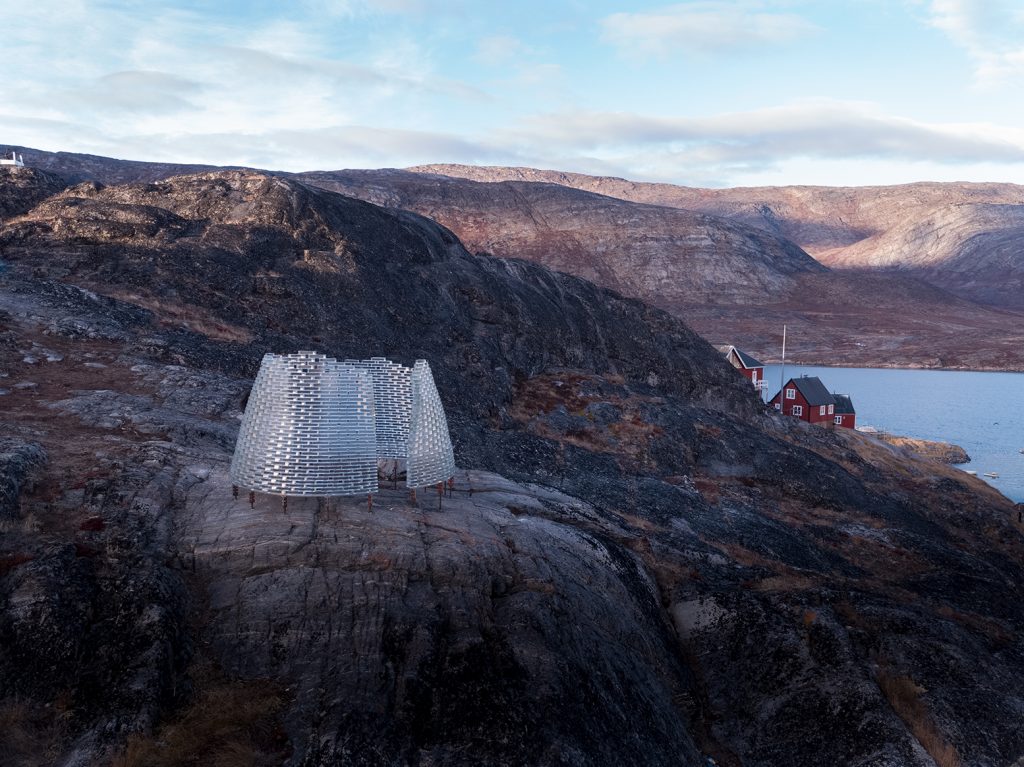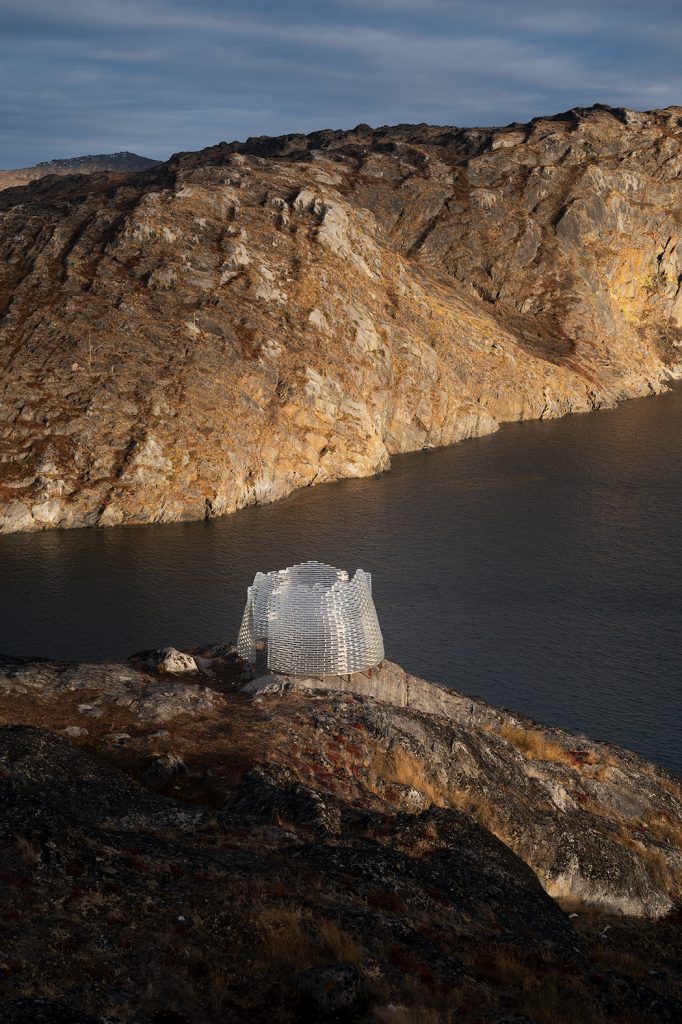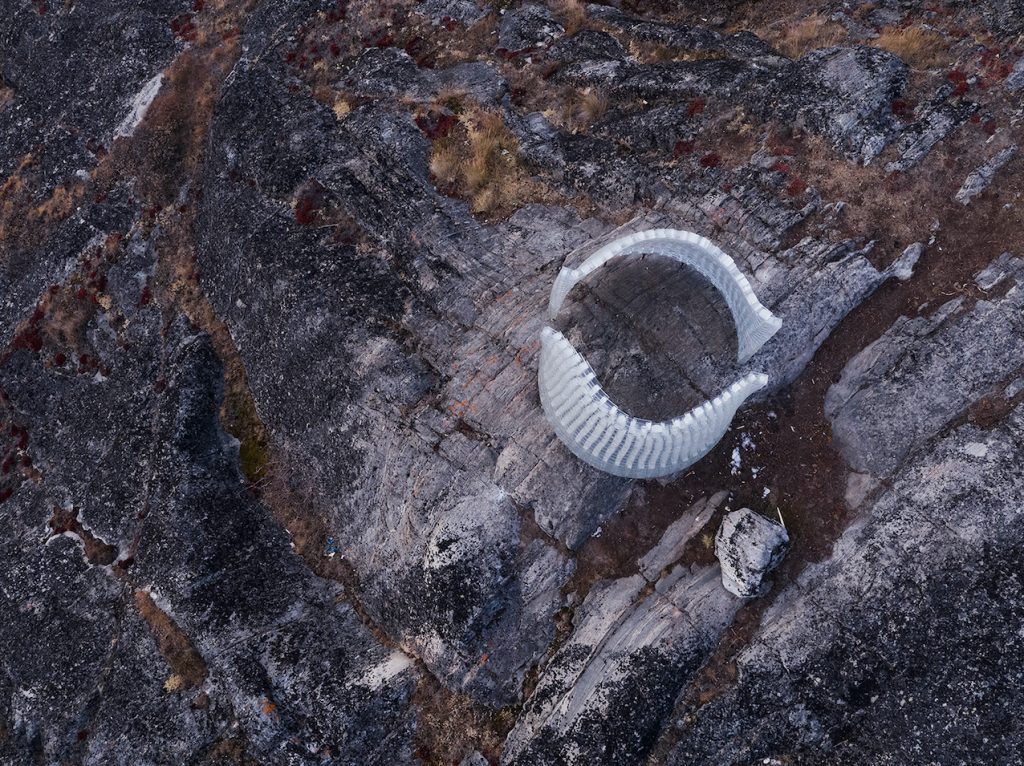



QAAMMAT Unesco World Heritage
Architect | Konstantin Ikonomidis
Location | Greenland
Year | 2021
This pavilion was designed and built by Architect Konstantin Ikonomidis in cooperation with Qeqqata Kommunia (the Qeqqata Municipality).
Located in Sarfannguit, a cultural landscape in West Greenland and a UNESCO World Heritage site since 2018, the Fjeld Pavilion by Konstantin Ikonomidis is designed to celebrate and promote the Inuit intangible cultural heritage and traditional knowledge of the environment. Characterized by the two fjords that meet on Sarfannguit’s eastern tip on the hills, the pavilion’s location has been carefully chosen by the local community, site manager Paninnguaq Fleischer-Lyberth and architect Konstantin Ikonomidis for its impressive view over the Sarfannguit municipality.
Based on research and testing by Ikonomidis alongside Faidra Oikonomopoulou and Telesilla Bristogianni from TU Delft, Qaammat is an architectural structure made of two curved walls of cast glass bricks. The five tons of opaque glass bricks composing the pavilion are handcrafted one by one at NVR, “Made in WonderGlass” Group. These travelled all the way from the Venice area to Denmark and then Greenland.
The building’s edifice comprises glass blocks arranged in a way that forms two narrow openings, which invites the visitor to experience its intimate atmosphere and opens up to the wider landscape. There is an immense sense of power in this natural landscape, yet it also reminds us of nature’s vulnerability. The concept of using glass as a building material ‘anchored’ in the rock translates this sensibility.
The glass was chosen to construct this piece because of its palpability, and its ability to highlight transparency; it camouflages the building and delineates the landscape – the pavilion inserts its presence but remains almost invisible. The interior architectural space develops an intricate relationship with the outside and provides an interesting and enjoyable space. While sitting inside, the viewer experiences the opaque material in combination with the sun, with the snow.
The pavilion is imagined as a canvas, which will come alive by reflecting the colour palette of its surroundings – sun, snow, seasons, and reflections of the building’s visitors. The glass will absorb and fluctuate light, and transform into the passage of time when viewed from afar. Through the multitudes of these interactions on the terrain, the pavilion will generate the illusion of a larger area and offer a variety of experiences.
Photographed by Julien Lanoo.